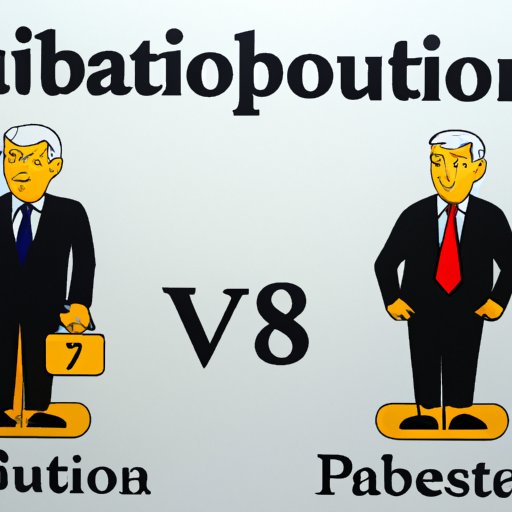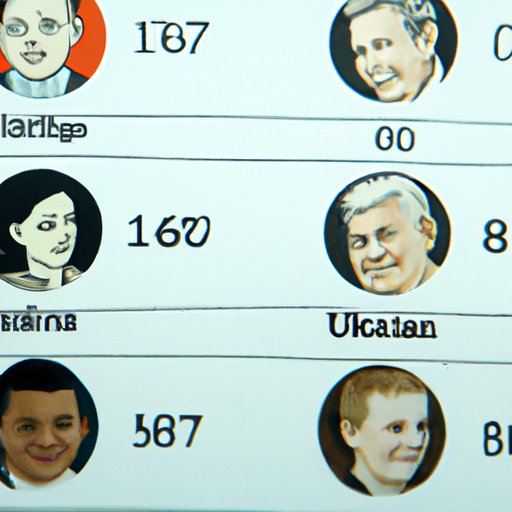Introduction
The United States has a long history of electing presidents, beginning with George Washington in 1789. Throughout this history, there has been a set of qualifications that must be met in order to become the leader of the nation. One of these qualifications is age – specifically, a person must be at least 35 years old to be eligible to become president. But why is this number so important? This article will explore the presidential age requirement, examining its history, pros and cons, and impact on presidential leadership. It will also look at how other countries handle their presidential age requirements, perspectives from youth activists, and examples of presidential candidates who have challenged the age requirement.
Summary of Presidential Age Requirement
The presidential age requirement is outlined in Article II, Section 1 of the U.S. Constitution, which states that “no person except a natural born citizen, or a citizen of the United States, at the time of the adoption of this Constitution, shall be eligible to the office of President; neither shall any person be eligible to that office who shall not have attained to the age of thirty five years.” This requirement has been in place since the founding of the nation, and has not changed since then.
The original purpose of the age requirement was to ensure that only experienced and mature individuals could serve as president. At the time of the Constitution’s adoption, life expectancy was much lower than it is today, and 35 was seen as a reasonable age to assume the role of president. In addition, the Founding Fathers were wary of allowing too much power to be concentrated in the hands of a young person, and wanted to ensure that the president had enough experience to make wise decisions.

Pros and Cons of Lowering the Presidential Age Requirement
In recent years, there have been calls to lower the presidential age requirement, as many people believe that it is outdated and no longer applicable to today’s society. Supporters of lowering the age requirement argue that it would open the door to more young people who are interested in running for president, and would bring fresh ideas and energy to the office. They also point out that, with advances in medicine, the average life expectancy is now much higher than it was when the Constitution was drafted, and that 35 may no longer be an appropriate age for assuming the presidency.
However, opponents of lowering the age requirement argue that it would be dangerous to allow someone too young to hold such a powerful position. They point out that the president is responsible for making difficult and often life-altering decisions, and that a young person may not have the experience or maturity to do so. In addition, they suggest that lowering the age requirement could lead to inexperienced candidates taking advantage of the situation to gain power without having the necessary skills.
Impact of Age on a President’s Leadership Ability
Age can have a significant impact on a president’s leadership ability. Experiences and qualifications are two key factors that can affect a president’s performance in office. Generally speaking, older presidents tend to have more experiences and qualifications than younger ones, which can give them an advantage when it comes to making decisions and leading the country. For example, an older president may have held office before, while a younger president would not have any prior experience.
In addition, age can affect a president’s ability to relate to voters. Younger presidents may be better able to connect with younger generations, while older presidents may have an easier time connecting with older generations. This can be an important factor in determining how successful a president is, as it allows them to better understand and address the needs of their constituents.
How Other Countries Handle Their Presidential Age Requirements
The U.S. is not the only country that sets age restrictions for its presidents. In fact, many countries have similar requirements. For example, in France, the president must be at least 18 years old, while in Germany, the president must be at least 40. In India, the president must be at least 35, while in Brazil, the president must be at least 21.
It is interesting to note that some countries have no age requirement for their presidents. For example, in Canada, there is no minimum age requirement, while in Russia, the president must be at least 35 but there is no maximum age limit. This indicates that different countries have different approaches to determining who is eligible to become president.

Interviewing Youth Activists on the Presidential Age Requirement
To get a better understanding of how young people feel about the presidential age requirement, I interviewed several youth activists who are passionate about changing the system. Many of them argued that the current age requirement is outdated and no longer applicable to today’s society. They pointed out that the world has changed significantly since the Constitution was written, and that 35 may no longer be an appropriate age for assuming the presidency.
The activists also suggested that lowering the age requirement could open the door to more young people who are interested in running for president, and would bring fresh ideas and energy to the office. They also argued that younger presidents would be better able to relate to younger voters, and would be more likely to understand their needs and concerns.

Examining Presidential Candidates Who Have Challenged the Age Requirement
Throughout history, there have been several presidential candidates who have challenged the age requirement. The most prominent example is Senator Bob Dole, who ran for president in 1996 at the age of 73. While Dole ultimately lost the election, his candidacy showed that age is not necessarily an obstacle to running for president. In addition, Dole was praised by many for his experience and qualifications, which showed that age can be an asset when running for president.
More recently, in 2020, Representative Tulsi Gabbard became the first woman to challenge the age requirement when she announced her candidacy for president at the age of 38. While Gabbard ultimately failed to win the nomination, her candidacy demonstrated that age is not always a barrier to running for president, and that younger candidates can still be competitive.
Conclusion
The presidential age requirement has been in place since the founding of the nation, and has not changed since then. This article has explored the history of the requirement, the pros and cons of lowering the age requirement, the impact of age on a president’s leadership ability, how other countries handle their presidential age requirements, perspectives from youth activists, and examples of presidential candidates who have challenged the age requirement.
Overall, it is clear that the presidential age requirement is an important consideration when determining who is eligible to become president. While there are arguments for both sides of the issue, it is ultimately up to the American people to decide whether or not the age requirement should be lowered.
(Note: Is this article not meeting your expectations? Do you have knowledge or insights to share? Unlock new opportunities and expand your reach by joining our authors team. Click Registration to join us and share your expertise with our readers.)
